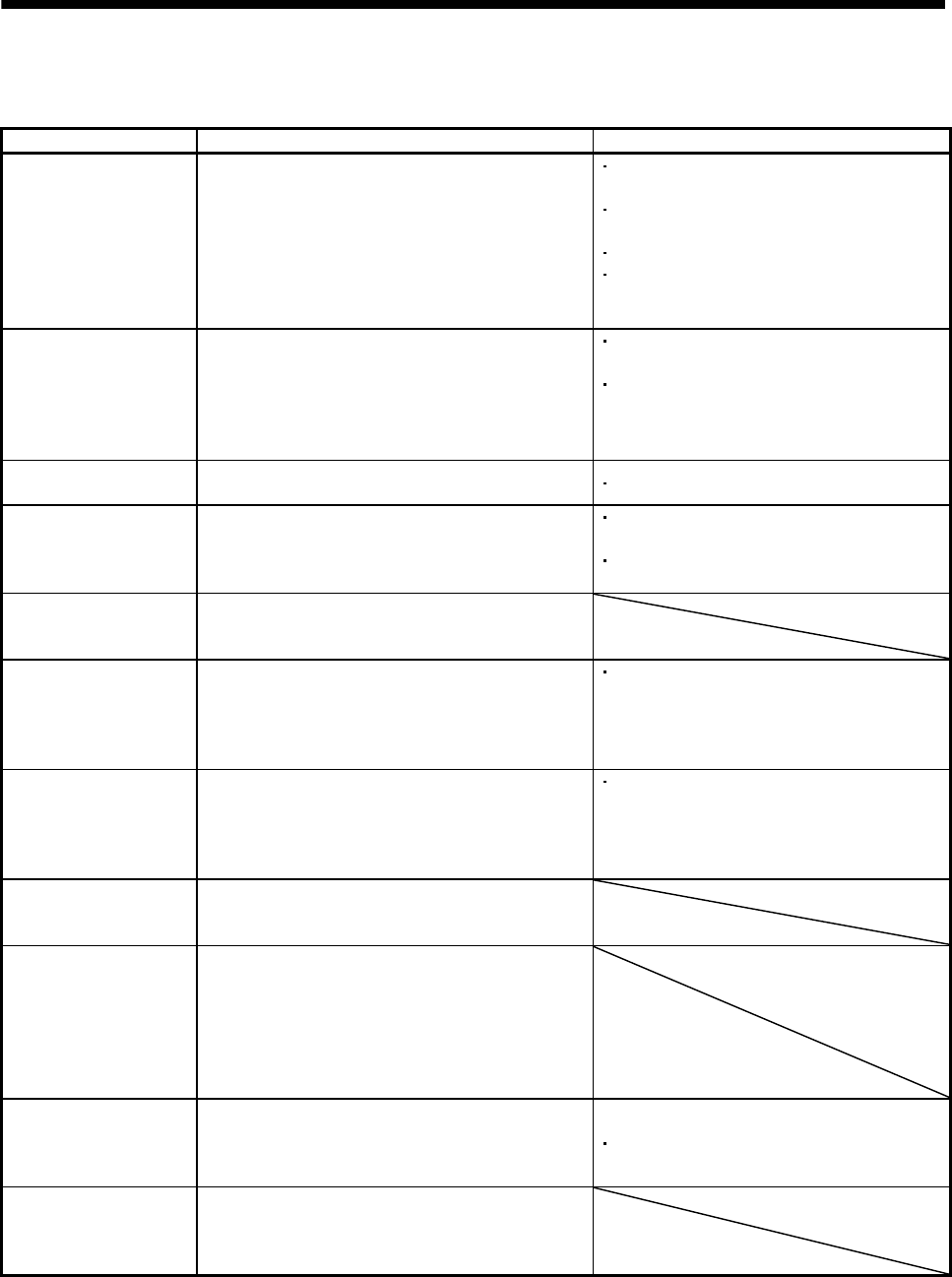
4 - 35
4. OPERATION
(1) Home position return types
Choose the optimum home position return according to the machine type, etc.
Type Home position return method Features
Dog type home position
return
With deceleration started at the front end of a proximity
dog, the position where the first
Z-phase signal is given past the rear end of the dog or
a motion has been made over the home position shift
distance starting from the Z-phase signal is defined as
a home position.(Note)
General home position return method using a
proximity dog.
Repeatability of home position return is
excellent.
The machine is less burdened.
Used when the width of the proximity dog can
be set greater than the deceleration distance of
the servo motor.
Count type home position
return
With deceleration started at the front end of a proximity
dog, the position where the first Z-phase signal is given
after advancement over the preset moving distance
after the proximity dog or a motion has been made
over the home position shift distance starting from the
Z-phase signal is defined as a home position.
Home position return method using a proximity
dog.
Used when it is desired to minimize the length
of the proximity dog.
Data setting type home
position return
An arbitrary position is defined as a home position.
No proximity dog required.
Stopper type home
position return
The position where the machine stops when its part is
pressed against a machine stopper is defined as a
home position.
Since the machine part collides with the
machine be fully lowered.
The machine and stopper strength must be
increased.
Home position ignorance
(Servo-on position as
home position)
The position where servo is switched on is defined as
a home position.
Dog type rear end
reference
The position where the axis, which had started
decelerating at the front end of a proximity dog, has
moved the after-proximity dog moving distance and
home position shift distance after it passed the rear
end is defined as a home position.
The Z-phase signal is not needed.
Count type front end
reference
The position where the axis, which had started
decelerating at the front end of a proximity dog, has
moved the after-proximity dog moving distance and
home position shift distance is defined as a home
position.
The Z-phase signal is not needed.
Dog cradle type
The position where the first Z-phase signal is issued
after detection of the proximity dog front end is defined
as a home position.
Dog type first Z-phase
reference
After the proximity dog front end is detected, the
current position moves away from the proximity dog in
the reverse direction. In this movement, the home
position is defined to be where the first Z-phase signal
is issued or the position that is the home position shift
distance away from where the first Z-phase signal is
issued.
Dog type front end
reference
The home position is defined to be where the axis has
moved the after-proximity dog moving distance and
home position shift distance from the front end of a
proximity dog.
The Z-phase signal is not needed.
Dogless Z-phase
reference
The home position is defined to be where the first Z-
phase signal is issued or the position that is the home
position shift distance away from where the first Z-
phase signal is issued.
Note. The Z-phase signal is a signal recognized in the servo amplifier once per servo motor revolution and cannot be used as an output
signal.


















